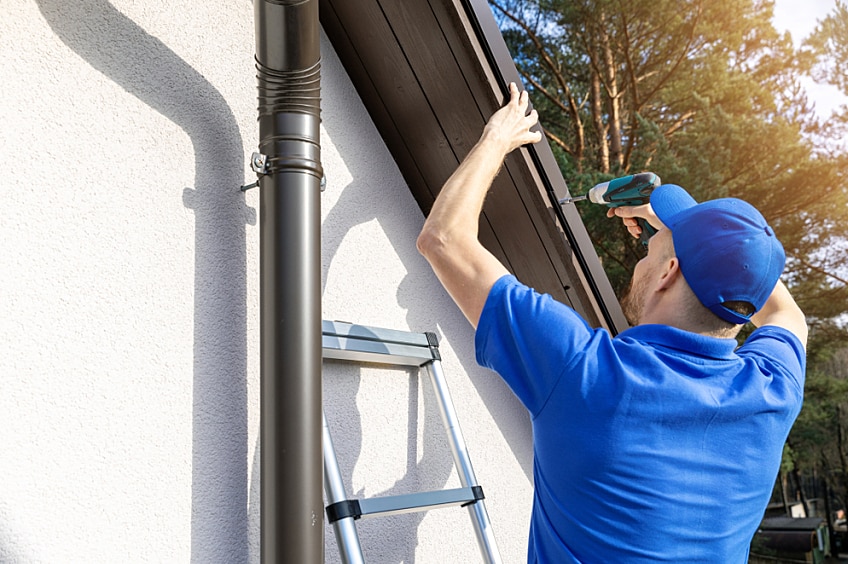A roof drip edge is a roofing material (a type of roof flashing) that diverts water away from (you guessed it!) your roof's edge or fascia. And, as a bonus, not only does it help keep your home dry, but it also helps guard against pests. So, even if you've heard the term before or think it's self-explanatory, there are good reasons to ask, "What is a roof drip edge and what exactly are the reasons I might need one for my home?"
Here's the low-down on what roof drip edges are, why they matter, and how to make sure your home has the most appropriate version of one of these important roof components.
What Does It Do?
A roof drip edge serves multiple purposes. With a low cost-to-benefit ratio, it can be a wise investment for your home. Many local building codes even require drip edges for roof installations and new home construction or re-roofing applications. Here are some key benefits:
- Helps protect the roof deck (the frame your roof is installed on) and fascia (the strip of board running around your roof edge that seals-off the roof interior and supports the gutter) from wind-driven rain, decreasing the possibility of leaks, rot, mold, and/or structural water damage.
- Helps seal the gaps sometimes found between the roof deck and fascia, helping prevent insects and vermin from sneaking into your attic.
- Provides a finished look for your home, which can help boost curb appeal.
- Reduces the risk of ice dams, thanks to proper water drainage.
Ultimately, the purpose of this roofing component is to help protect your home from moisture, pests, and structural damage.
Are There Different Types of Drip Edges?
Yes — there are several different types of drip edge, constructed in different shapes depending on the type of roof they are intended for: the variety of styles makes it extra-helpful to work with a roofing professional who can identify the drip edge that best suits your particular roof design, as well as your local building codes and weather needs.
In general, drip edges are constructed from corrosion-resistant or galvanized metal — such as galvanized steel, aluminum, or copper. Drip edges come in a rainbow of colors to coordinate with your shingles or exterior trim.
Do All Homes Have a Drip Edge?
Not all asphalt shingle roofs have these protective elements, but it is a good practice to install them. Most building codes require drip edges, and trusted experts such as the National Roofing Contractors Association recommend using them at all eaves and rakes with asphalt shingle roof systems.
Whether you are in the market for a new roof, want to look at ways a drip edge can help extend the life of your current roof, or are still looking for information on what is a roof drip edge, speaking with a trusted, trained GAF certified roofing contractor* is an excellent way to make sure you get the appropriate roof-edging for your property and help protect your investment through whatever rainy seasons might lie ahead!
*Contractors enrolled in GAF certification programs are not employees or agents of GAF, and GAF does not control or otherwise supervise these independent businesses. Contractors may receive benefits, such as loyalty rewards points and discounts on marketing tools from GAF for participating in the program and offering GAF enhanced warranties, which require the use of a minimum amount of GAF products. Your dealings with a Contractor, and any services they provide to you, are subject to the Contractor Terms of Use.

